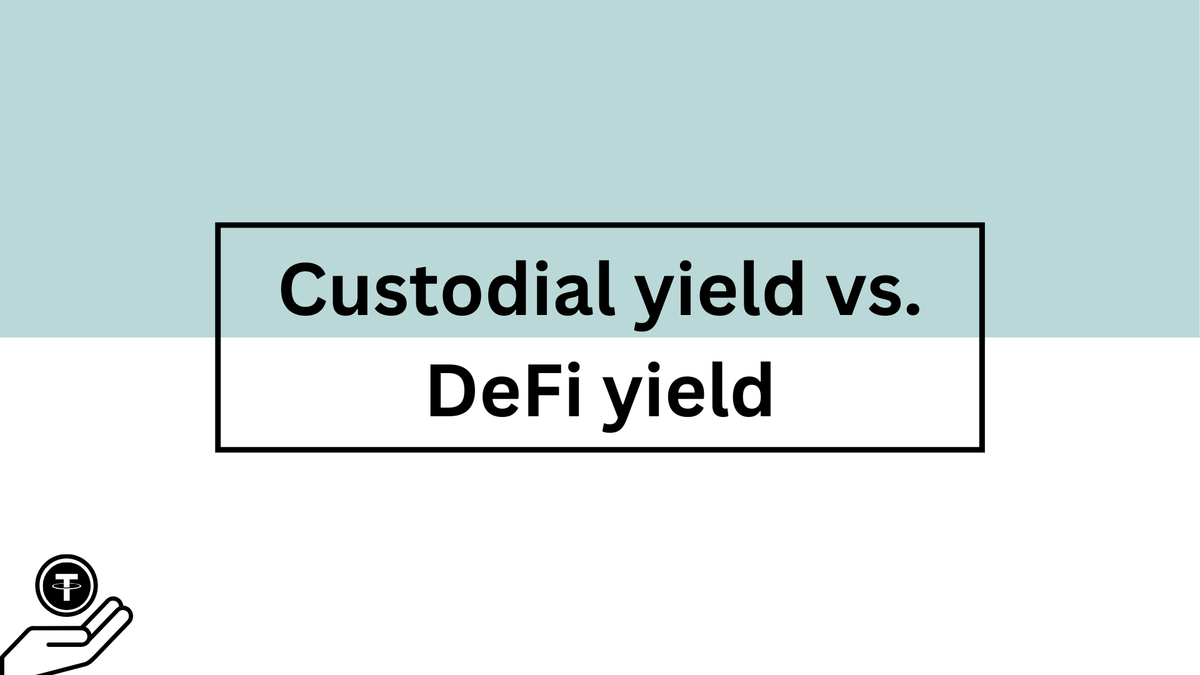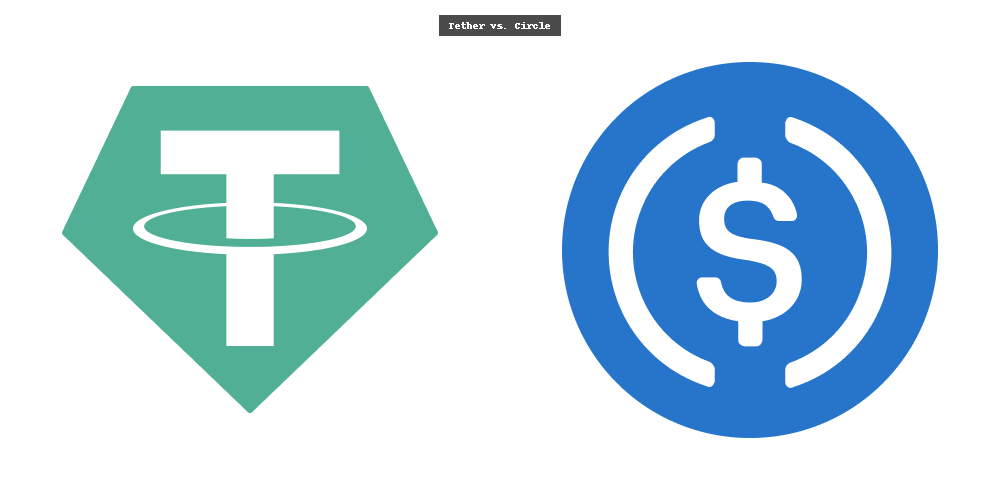Custodial yield vs. DeFi yield

Crypto yields offer a way to earn returns on your digital assets, but the approach you choose will determine both your potential earnings and the risks you face.
What crypto yield means
Yield is the return you earn for letting others use your assets. In crypto, it’s quoted as APR (no compounding) or APY (includes compounding). It comes from lending (borrowers pay interest), trading activity (liquidity provider fees), staking (protocol rewards), and token incentives. In DeFi, protocols like Aave or Compound set rates algorithmically based on supply and demand; in custodial products (CeFi), companies lend or deploy your deposits and share a slice with you. The number is the headline; the risk you take to get it is the story.
Custodial yield
Custodial yield means you hand assets to a centralized platform (exchange, lender, or fintech). They hold your keys, generate returns via lending or strategies, and pay you out, often with a clean UI and predictable schedules. Typical stablecoin offers have ranged from mid-single digits to the low teens, with higher teaser rates in promos or lockups depending on the platform and tiering. You trade convenience for counterparty exposure: if the platform mismanages funds, freezes withdrawals, or gets hacked, you’re in the blast radius.
- How it earns: Platforms lend to institutions or traders, run market-neutral or basis strategies, and sometimes share real-world asset income (e.g., Treasuries) via structured products. You receive a cut as interest or rewards, often credited daily or monthly. Rates can be tiered by lockup and loyalty status, and may change with market conditions.
- Key risks: Platform solvency, rehypothecation opacity, regulatory actions, and being a prime hacking target. Insurance and “proofs” help, but ultimately you’re trusting a company’s balance sheet and controls. Limit exposure per platform, read withdrawal terms, and prefer providers with transparent disclosures and stress-tested histories.
DeFi yield
DeFi keeps you in control of your keys while smart contracts do the work: setting interest rates, paying fees, and distributing incentives. You can inspect mechanics, audits, and collateral parameters, but you now wear smart contract, strategy, and operational risk. Baseline lending yields on major stablecoins often sit in the low-to-mid single digits, with incentives occasionally pushing totals higher. Liquidity pools and farming can jump returns, but they’re variable and often short‑lived.
- How it earns:
- Lending: Supply USDC/DAI to protocols like Aave or Compound; earn borrower interest.
- Liquidity provision: Add assets to AMMs (e.g., Curve) and earn trading fees plus possible token rewards.
- Yield farming: Chase incentive programs that boost APY; these fade as emissions and token prices change. Forbes’ primer captures why high yields tend to compress over time.
- Key risks: Smart contract exploits (audits reduce, don’t eliminate, risk), impermanent loss in AMMs, governance or parameter changes, and composability cascades when one protocol’s stress spreads to others. Risk is the price of transparency and control, so start with blue‑chip, audited protocols and small tickets.
Side‑by‑side trade‑offs
| Attribute | Custodial yield (CeFi) | DeFi yield |
|---|---|---|
| Who holds keys | Platform custody | You custody (wallet) |
| Typical stablecoin yield | Often mid-single digits to low teens; higher in promos | Often low-to-mid single digits; higher with incentives |
| Predictability | More stable; lockups common | Variable; market- and incentive-driven |
| Main risks | Platform solvency, freezes, hacks, regulation | Smart contract exploits, impermanent loss, complexity |
| Complexity | Low: click-and-earn | Medium–high: wallets, gas, protocol choice |
How to choose without losing sleep
Start with your non‑negotiables: control or convenience? If you prize simplicity and can accept counterparty exposure, custodial products can be fine, so long as you spread risk, read terms, and resist sensational APYs. If you prize self‑custody and transparency, begin with large, audited DeFi lending markets; learn pool utilization, collateral factors, and withdrawal mechanics before exploring yield farming. And remember: some “high yield” designs have broken spectacularly (TerraUSD is the cautionary case). Don’t overpay for yield with existential risk.
- If you want near‑zero effort: Custodial savings with plain stablecoins, modest rates, and clear terms. Prefer platforms with robust disclosures and a regulatory footprint you understand.
- If you want control: Stick to blue‑chip DeFi (Aave/Compound for majors) first; treat token‑incentivized pools as tactical, not core. Reassess as incentives change. Forbes’ guidance for first‑timers points to starting with established lenders.
- If you only want dollar exposure: Favor stablecoin strategies (CeFi or DeFi), but diversify issuers and venues. Verify peg health and on‑chain liquidity before sizing up. Stablecoin Insider’s breakdown covers issuer and strategy differences, including RWA‑backed yields.
A simple safety checklist
- Key custody: Decide up front, are you okay trusting a company, or do you want to hold your keys?
- Platform quality: Look for proof‑of‑reserves/attestations, jurisdiction clarity, conservative rates, and behavior through stress.
- Protocol maturity: Favor audited, long‑lived, high‑liquidity protocols.
- Limit exposure: Set per‑platform/protocol caps; avoid stacking correlated risks across similar venues.
- Understand exits: Know lockups, cooldowns, and penalties. Test small deposits and withdrawals before scaling.
- Treat incentives as temporary: Model returns without emissions; assume the boost decays.
The “middle ground” to know about
Yield‑bearing stablecoins embed income into a dollar‑pegged asset, so you earn while simply holding. Examples like USDY and OUSD channel returns from Treasuries or DeFi strategies, often in the ~4–7% APY zone in recent snapshots. They trade convenience for new risks: smart contract exposure, liquidity depth, and regulatory clarity. Stablecoin Insider’s guide is a solid starting point for comparing designs and trade‑offs.
Another reference point: Ethereum staking. As more ETH was staked, network yields dropped below 3% by mid‑2025, with additional reductions if you use pooled or custodial staking due to fees. Some DeFi and RWA‑backed stablecoin strategies out‑yield staking, which is why many treat it as a baseline rather than a max‑yield play.
Conclusion
Custodial yield buys simplicity but concentrates risk in a company; DeFi yield buys control and transparency but adds technical and strategy risk. Most everyday users do best with a blend: blue‑chip DeFi as a core, modest custodial exposure to diversify, strict caps on high‑yield tactics, and a standing rule to reduce risk first, ask questions later. If you can sleep through the swings and still stick to your plan, you’ve likely got the balance right.
References
- https://cryptonews.com/academy/custodial-vs-non-custodial-wallet/
- https://fedimint.org/docs/TradeOffs/NotYourKeys
- https://www.transfi.com/blog/stablecoin-yields-in-2025-mapping-risk-return-and-protocol-dominance
- https://stablecoininsider.com/stablecoin-yield/
- https://www.vestinda.com/blog/defi/risks-and-rewards-in-defi
MITOSIS official links:
GLOSSARY
Mitosis University
WEBSITE
X (Formerly Twitter)
DISCORD
DOCS



Comments ()